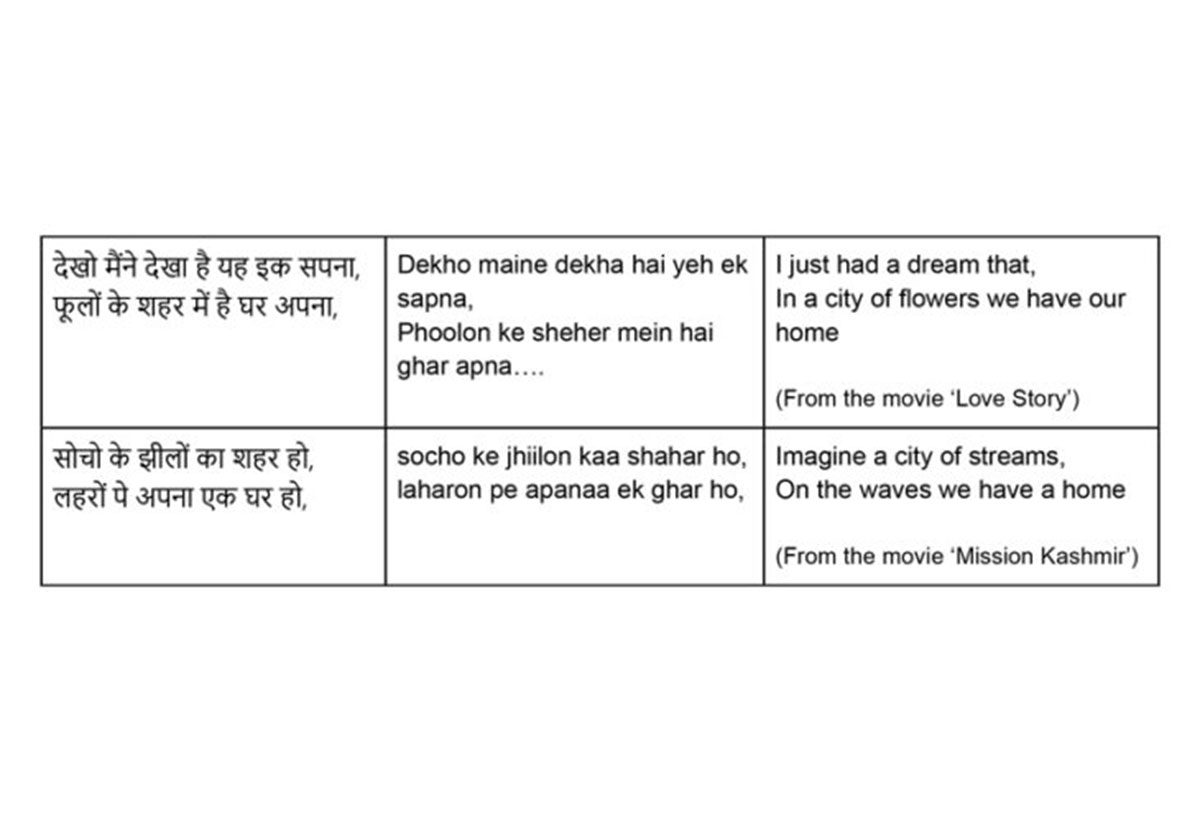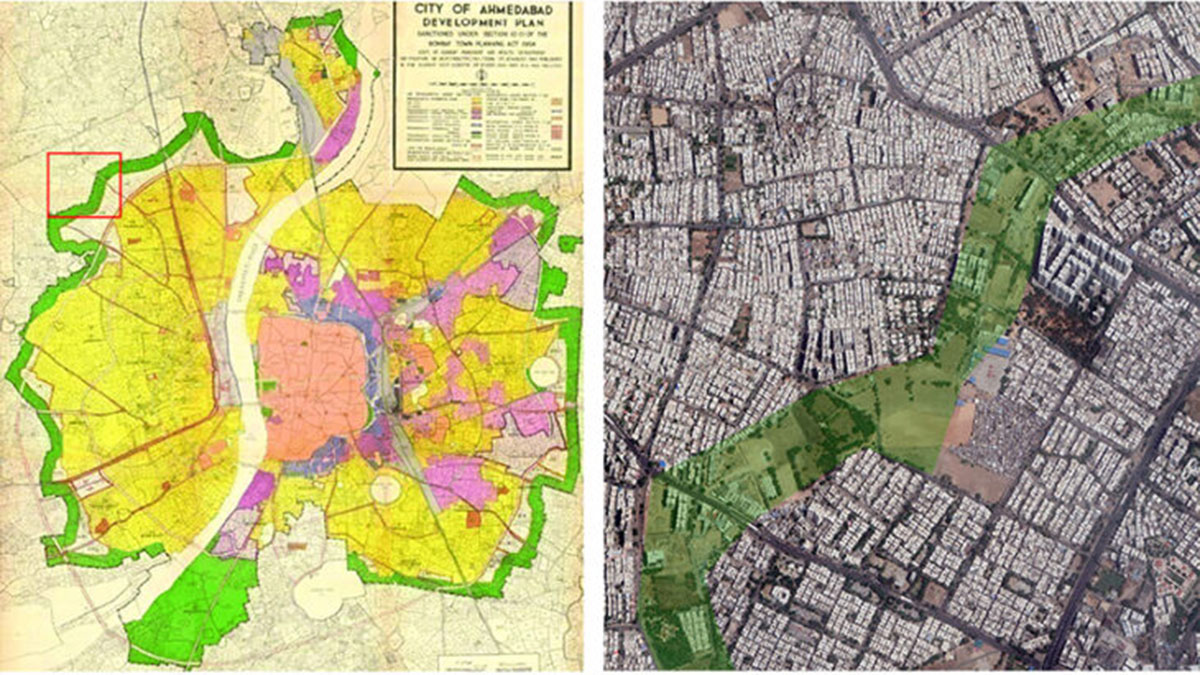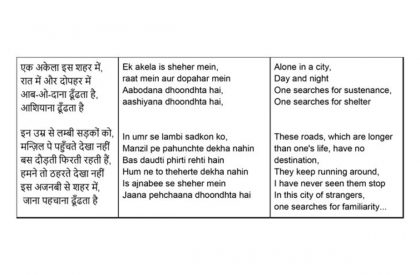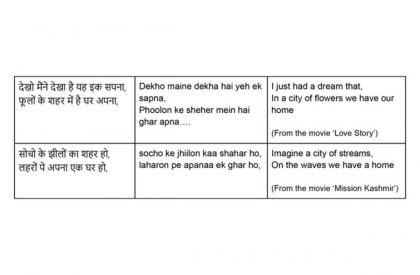The 1977 Bollywood film ‘Gharonda’ brought to light the difficulty of owning a home in Mumbai, a mega-city, a city of dreams and aspirations that attracts people from all over India. The song ‘Ek akela is sheher mein….’ from this movie, captures the multiple feelings associated with life in a big city and the search for a home.

What makes one feel ‘at home’ in a city? As the above song suggests, it is probably a sense of familiarity – with people, streets, buildings, and the confidence that you can find your way through it on your own? In the song, the young man is not just looking for ‘abodana’ (sustenance, including livelihood and other conditions that lead to a good life), but also ‘ashiyana’ (shelter, or a secure place one can call home). The roads seem longer than his own life, indicating that he is feeling lost and losing a sense of purpose in the city. The advantages of a city are also sometimes its disadvantages. For example, with increase in concentration of people, wealth and energy the environment becomes strained, conflict increases and the city never sleeps. City dwellers long for a home (with ‘urban facilities’) in the village and village dwellers aspire (some don’t have a choice) to find jobs and live the life of a city dweller. Aravind Adiga has captured this wonderfully in his book, The White Tiger. Why is the relation between home and city so strained?
In our second article, we had said that “a home is not only a shelter but a manifestation of our aspirations, memories, emotions, identity, perceived status, beliefs, culture and so on. It has both material and abstract components.” The same applies to a neighbourhood and a city. Famous Architect and Urban Planner, Charles Correa, in his essay ‘Great city terrible place….’ talks about how a city can be great in our imagination (owing to the feelings associated with it), but need not actually be a healthy place to live in. One might be happy living in a city despite issues of traffic, garbage and environment, owing to one’s association with people, neighbourhoods and other places. On the other hand, there are many who aspire to move to a clean place surrounded by nature, an aspiration that is leveraged by real estate advertisements. One hardly sees the building in these hoardings, mostly happy families enjoying the ‘lush’ greenery around. It is not a surprise that various Bollywood songs resonate this longing of natural environments in cities. In the 1981 Bollywood movie ‘Love story’, a young couple dreams of building a small cottage in the mountains. Similarly, in Mission Kashmir (2000), a couple dreams of building a home on a stream.

In 1898, Ebenezer Howard, a British Planner, initiated a nature-oriented method of planning cities. In his book Garden Cities of To-morrow, he put forth the idea of planning cities as a mixture of town and countryside. This was called the Garden City Movement. The primary objective of this method was to tap the benefits of a countryside environment and avoid overcrowding in cities. For this, he laid out a certain population size of a central city surrounded by satellite cities. According to him, the ideal scenario was to have cooperative ownership and provide houses for industrial workers with good living environments. There are some cities around the world that have been built on the same premise.
Ahmedabad interestingly shares a link to this movement. In 1965, the Ahmedabad Municipal Corporation proposed a masterplan with a green belt around Ahmedabad. This ‘greenbelt’ had its roots to the garden city movement. The green belt was viewed as a great tool to incorporate ‘green’ into the city. Unfortunately, we underestimated the growth of the city. Ahmedabad grew into and beyond the green belt, making it redundant.

Thorin Okenshield, a character from the book, The Hobbit, says with his dying breath, “If more people valued home above gold, this world would be a merrier place”. The reality of our cities today is that they are based on the idea that we as human beings have the power to control the destiny of the natural environment through intelligent actions. This view has led to modern problems of plastic waste and climate change. At a philosophical level, this is an attitude of consumption over co-living, which has manifested itself in several ways in the kind of homes, neighbourhoods and cities we are creating. One probably needs to adopt a more open-ended view of cities which includes people, plants, animals and the environment that we inhabit.
British philosopher Alain de Botton proposes a 6 point answer for architects and planners on designing cities that can make people happy.
- Variety and order – Too much variety and things seem chaotic while too much order and it feels monotonous.
- Visible life – We like to see and meet others. The pandemic has taught us that No amount of video conferences will replace meeting people face to face.
- Compactness – Cities need to be compact, so resources can be used more efficiently. Sprawling is neither good for the environment nor for the human psyche.
- Orientation and mystery – It is good sometimes to discover new streets, back alleys etc. We need both orientation so as to not get confused every time we go out but also the mystery of getting lost and discovering a new way out.
- Scale – Philosopher Joseph Campbell once wrote, ‘If you want to see what a society really believes in, look at what the biggest buildings on the horizon are dedicated to…’ Alain suggests that the ideal height for any city block is 5 stories high – no more. Of course, occasionally there can be a huge building, but he says we should keep that for something really special – something all of humanity can love.
- Making it local – The buildings should reflect the local climate and culture
So, is this a recipe for a good city? Can there be one?
Let us know your thoughts in the comments below!







